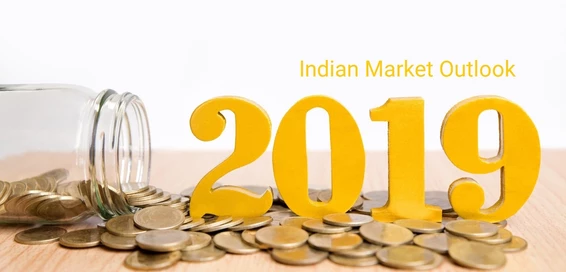This Article was originally published in The Global Analyst
“2019 Outlook: Odds are in favor of equities”-Morgan Stanley
“Tightening of global financial conditions pose downside risks”- Credit Suisse
This is the time of the year that we ask this usual but tricky question. What’s the outlook for the market?
Sometimes, I think the market adapts to the outlook due to the sheer weight of views (on a lighter note though!).
The usual way of tackling the issue is to look at the fundamentals and that’s what I am proposing to do. However, star gazing 2019 can turn more tricky due to election factor. India will go for a nation wide election early 2019 and the course of that will tremendously influence the market performance. If the election throws a fractured mandate, it will be negative for the markets as foreign investors will quickly move to the sidelines. However, if the election mandate is in favor of one party (BJP or Congress coalition) with a clear majority, markets will likely celebrate the decision with a positive performance.
The Four-Force Framework
I have created a simple framework comprising four critical variables that affects the market ie., Economy, Earnings, Valuations and Institutional investments.
Firstly, the bigger picture of the economy is measured through real GDP growth, fiscal position, inflation, and debt. Forecast by international agencies like IMF and others are taken into account to provide an assessment here. Secondly, we look into the earnings trend, both historical and prospective. Though the broader economy signals earnings direction, there may be different reactions at a sector level. Thirdly, we look at the valuations as measured by price to earnings (p/e), price to book (p/b) and dividend yield (DY). When market valuation go down, it signals a positive view going forward. Finally, institutional investment support, as measured by investment flows from domestic as well as foreign institutional investors. The four-force framework brings all the four factors together to take a view on the Indian stock market for 2019.
The Findings
India has a good story going on the economy front. The real GDP is estimated to grow at 7.4% as per IMF estimate for 2019 on the back of domestic consumption and good capital expenditure. The inflation forecast at 4.9% for 2019 is also comfortable given the historical average of 9.4% between 2009 and 2014. Since 2015, inflation has shown a downward trend, which is unusual for an emerging market. On the fiscal side, the deficit is projected at 6.5% with equal split between central and state deficits. In my view, this is again a comfortable number to look at given the history. The current account deficit is also well under control at -2.5% mostly cushioned by a strong FDI flow. India’s gross government debt stands at 68% of GDP while that of corporate debt stands at 150% of GDP. I will say this not as comfortable though it looks manageable. Overall, the economy provides a positive backdrop to the market outlook for 2019.
On the earnings front, things look brighter for 2019. Reuters consensus estimate for growth is pegged at 15% growth for 2019 as against an EPS growth of 10% for 2018. The prediction for 2020 at 23% augers even better on the earnings call. The positive outlook for earnings can help market weather unexpected fluctuations and can sustain the interest of foreign investors.
On the valuation front, we see that it is neither steeply valued nor is it available cheap. The forward-looking price to earnings ratio at 19.8 for 2018 is reasonable though not cheap. Similarly, the price to book ratio at 1.8 is in line with past trends. India currently offers a dividend yield of 3.1% that is again in line with past trend and estimates. Therefore, my rating on valuation would be neutral for 2019.
Finally, the parameter on domestic and foreign investment is a crucial element for the market. Here the trend is one where Foreign Institutional Investment (FII) has been coming down while Domestic Institutional Investment (DII) has been going up. During the last four years, FII’s were net sellers while DII’s have been net buyers. The increased support of DII’s can be understood due to the growth of Systematic Investment Plan (SIP) that enables mutual funds to gather assets in predictive ways. However, the consistent net selling of FII’s denotes reduced confidence of foreign investors about the big picture appeal of India or it can denote better opportunities elsewhere, especially US which has been experiencing a 10-year bull run. Either way, the prospect for 2019 will hinge on FII investments turning positive, which is quite possible given the benign macro picture. Hence, my rating on this would be neutral.

In conclusion, the four-force framework is pointing towards a positive year for 2019. The interpretation of that would be an expected performance north of 10%. However, several risks could spoil the party including a fractured political mandate. In addition, the direction of global markets will also set the tone in the local market, especially the US. US stock market is at an exhaustion point in terms of a long bull run. Experts are flagging warnings signs for 2019 and if this materializes, it can drag emerging markets into it and India will not be an exception. We also have a currency pressure to endure.

Investing is a long-term game and the long-term story for India is a very positive one. Staying in the market and investing with conviction during down turns can be the best strategy.
Happy Investing!
